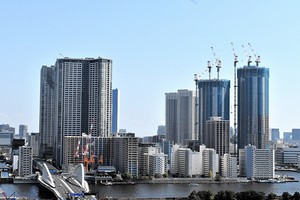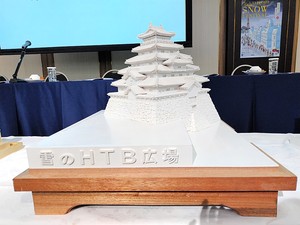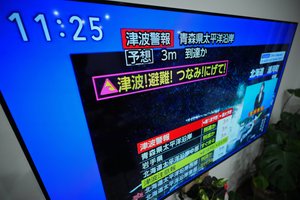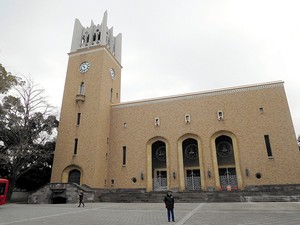By SHOKO TAMAKI/ Staff Writer
April 26, 2023 at 18:03 JST
The Hakuto-R lunar lander crashed into the moon on April 26 after running out of fuel and failing to reduce its speed during its descent to the surface, startup company ispace Inc. said.
Tokyo-based ispace launched the lunar lander in December in hopes of becoming the first private company to land a space craft on the moon.
But at a news conference on the morning of April 26, ispace said, “The lunar lander could not make a soft landing on the moon that we had aimed for.”
Takeshi Hakamada, CEO of ispace, looked on the bright side.
“It’s a significant achievement that we could establish communication with the lunar lander and acquire flight data” before contact was lost, Hakamada said at the news conference. “I believe that’s a big step forward to improve the maturity of moon landings in future projects.”
According to the company, the lander started descending from around 100 kilometers above the surface at 12:40 a.m. on April 26.
As it approached the moon, its engines were reversed to reduce speed.
However, all communication between Hakuto-R and flight controllers was lost just before the lander was scheduled to touch down on the moon’s surface at 1:40 a.m. on April 26, ispace said.
The company’s control room has not received any data showing that the lander had reached the surface.
But ispace confirmed that the amount of remaining fuel in the lander had reached zero, and that the descending speed of the space craft quickly increased.
From these factors, the company assumes the lander crashed on the moon in a “hard landing.”
A sensor that measures the distance between the lander and the moon didn’t work properly, the company said, likely causing the craft to use too much fuel after its engines were reversed.
The company said it is analyzing the available data to determine what exactly happened.
The unmanned lunar lander was launched in December aboard a Falcon 9 rocket of SpaceX in Florida.
The space craft was carrying seven items, including a moon exploration robot created by the Japan Aerospace Exploration Agency (JAXA) and major toy company Tomy Co., and a lunar rover developed by the United Arab Emirates.
Under the plan, the robot and rover were to be deployed on the moon’s surface after the landing and be powered by electricity through Hakuto-R. Information collected would be sent to Earth through communication devices aboard the lunar lander.
Despite the failure, the company, founded by Hakamada in 2010, will continue with its future moon landing projects.
In 2024, ispace plans to launch another lunar craft that will transport a new moon rover that the company is developing.
It will also carry a water electrolyzer for use on the moon’s surface and a food production module both developed by private companies.
In another launch in 2025, the company’s lunar lander will transport goods for the Artemis program, a project led by the United States for human exploration of the moon and Mars.
Items transported by ispace for the 2025 mission will include a seismograph of the National Aeronautics and Space Administration (NASA) and an underground temperature measurement device.
The company also plans to build a lunar town with a population of 1,000 and 10,000 annual visitors by 2040.
In addition, it aims to search for water on the moon and establish a business for transporting goods to Earth’s satellite.




















A peek through the music industry’s curtain at the producers who harnessed social media to help their idols go global.
A series based on diplomatic documents declassified by Japan’s Foreign Ministry
Here is a collection of first-hand accounts by “hibakusha” atomic bomb survivors.
Cooking experts, chefs and others involved in the field of food introduce their special recipes intertwined with their paths in life.
A series about Japanese-Americans and their memories of World War II